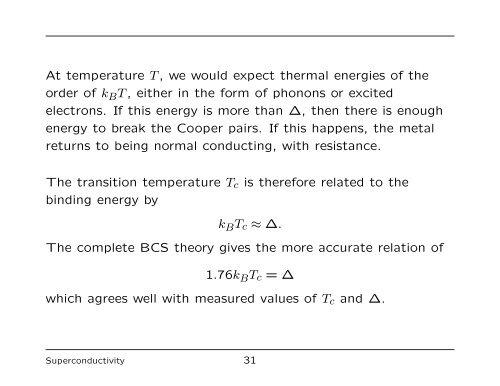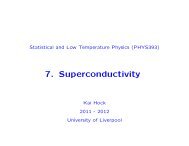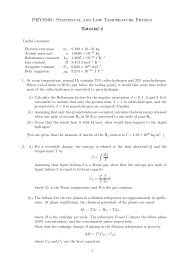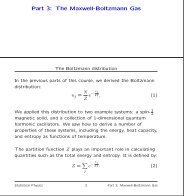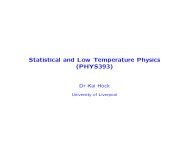The Nature of the Cooper Pair - University of Liverpool
The Nature of the Cooper Pair - University of Liverpool
The Nature of the Cooper Pair - University of Liverpool
You also want an ePaper? Increase the reach of your titles
YUMPU automatically turns print PDFs into web optimized ePapers that Google loves.
At temperature T , we would expect <strong>the</strong>rmal energies <strong>of</strong> <strong>the</strong><br />
order <strong>of</strong> k BT , ei<strong>the</strong>r in <strong>the</strong> form <strong>of</strong> phonons or excited<br />
electrons. If this energy is more than ∆, <strong>the</strong>n <strong>the</strong>re is enough<br />
energy to break <strong>the</strong> <strong>Cooper</strong> pairs. If this happens, <strong>the</strong> metal<br />
returns to being normal conducting, with resistance.<br />
<strong>The</strong> transition temperature Tc is <strong>the</strong>refore related to <strong>the</strong><br />
binding energy by<br />
k BTc ≈ ∆.<br />
<strong>The</strong> complete BCS <strong>the</strong>ory gives <strong>the</strong> more accurate relation <strong>of</strong><br />
1.76k BTc = ∆<br />
which agrees well with measured values <strong>of</strong> Tc and ∆.<br />
Superconductivity 31


